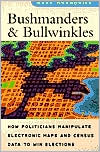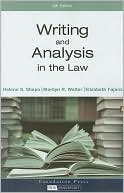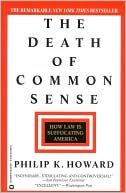Bushmanders and Bullwinkles: How Politicians Manipulate Electronic Maps and Census Data to Win Elections
For years Mark Monmonier, "a prose stylist of no mean ability or charm" according to the Washington Post, has delighted readers with his insightful understanding of cartography as an art and technology that is both deceptive and revealing. Now he turns his focus to the story of political cartography and the redrawing of congressional districts. His title Bushmanders and Bullwinkles combines gerrymander with the surname of the president who actively tolerated racial gerrymandering and draws...
Search in google:
For years Mark Monmonier, "a prose stylist of no mean ability or charm" according to the Washington Post, has delighted readers with his insightful understanding of cartography as an art and technology that is both deceptive and revealing. Now he turns his focus to the story of political cartography and the redrawing of congressional districts. His title Bushmanders and Bullwinkles combines gerrymander with the surname of the president who actively tolerated racial gerrymandering and draws attention to the ridiculously shaped congressional districts that evoke the antlers of the moose who shared the cartoon spotlight with Rocky the Flying Squirrel.Written from the perspective of a cartographer rather than a political scientist, Bushmanders and Bullwinkles examines the political tales maps tell when votes and power are at stake. Monmonier shows how redistricting committees carve out favorable election districts for themselves and their allies; how disgruntled politicians use shape to challenge alleged racial gerrymanders; and how geographic information systems can make reapportionment a controversial process with outrageous products. He also explores controversies over the proper roles of natural boundaries, media maps, census enumeration, and ethnic identity. Raising important questions about Supreme Court decisions in regulating redistricting, Monmonier asks if the focus on form rather than function may be little more than a distraction from larger issues like election reform. Characterized by the same wit and clarity as Monmonier's previous books, Bushmanders and Bullwinkles is essential background for understanding what mightprove the most contentious political debate of the new decade. Christian Science Monitor - Wm. Bradley Stock This book is valuable and should prove an enjoyable read for the policy wonk in the family. General readers hoping to understand the recent census and upcoming Congressional redistricting battles will find the book a serviceable guide. Even a quick browse through the maps and graphics is wonderfully informative.
Preface1. Twist and Clout2. Gerry's Legacy3. Thing Majorities4. Redrawing the Lines5. Gauging Compactness6. Props and Propaganda7. Immunizing Incumbents8. What a Friend We Have in GIS9. A Tale of Two Censuses10. Beyond Boundaries11. EpilogueNotesIndex
\ Wm. Bradley StockThis book is valuable and should prove an enjoyable read for the policy wonk in the family. General readers hoping to understand the recent census and upcoming Congressional redistricting battles will find the book a serviceable guide. Even a quick browse through the maps and graphics is wonderfully informative. \ — Christian Science Monitor\ \ \ \ \ Publishers Weekly\ - Publisher's Weekly\ With the 2000 census completed, congressional districts will soon be redrawn. And how they are redrawn may determine who controls the next Congress. Monmonier instructs readers in the complexities of the remapping process and explores its possible outcomes. According to the author, "the goal of most redistricting efforts" is to protect incumbents, but there are other goals. After the 1990 census, one aim was to increase minority representation then-president Bush's gerrymandering led to the creation of New York City's bizarrely shaped 12th congressional district, which, according to Monmonier, resembles Bullwinkle's antler. It may seem surprising that a Republican administration would want to create districts that would elect minorities (who are less likely than whites to vote Republican), but as Monmonier (How to Lie with Maps), a geography professor at Syracuse University, explains, such districts can, paradoxically, decrease minority representation in Congress by adding white voters to surrounding districts. The author relates the history of political gerrymandering (named after Elbridge Gerry, governor of Massachusetts and later the fifth U.S. vice-president), but he makes his strongest case when talking about the future. Monmonier argues that the U.S. needs to consider other alternatives to racial gerrymandering to ensure better minority representation in Congress (e.g., proportional representation which caused the downfall of Lani Guinier). The fact is that race matters, Monmomier observes; the emphasis should be on how racial electoral conflicts are resolved. (Apr.) Forecast: This is a timely and important book, but too technical for any but devoted cartographers and political junkies. Perhaps its arguments will trickle into public consciousness by way of political journalists rather than through a wide readership. Copyright 2001 Cahners Business Information.\ \








